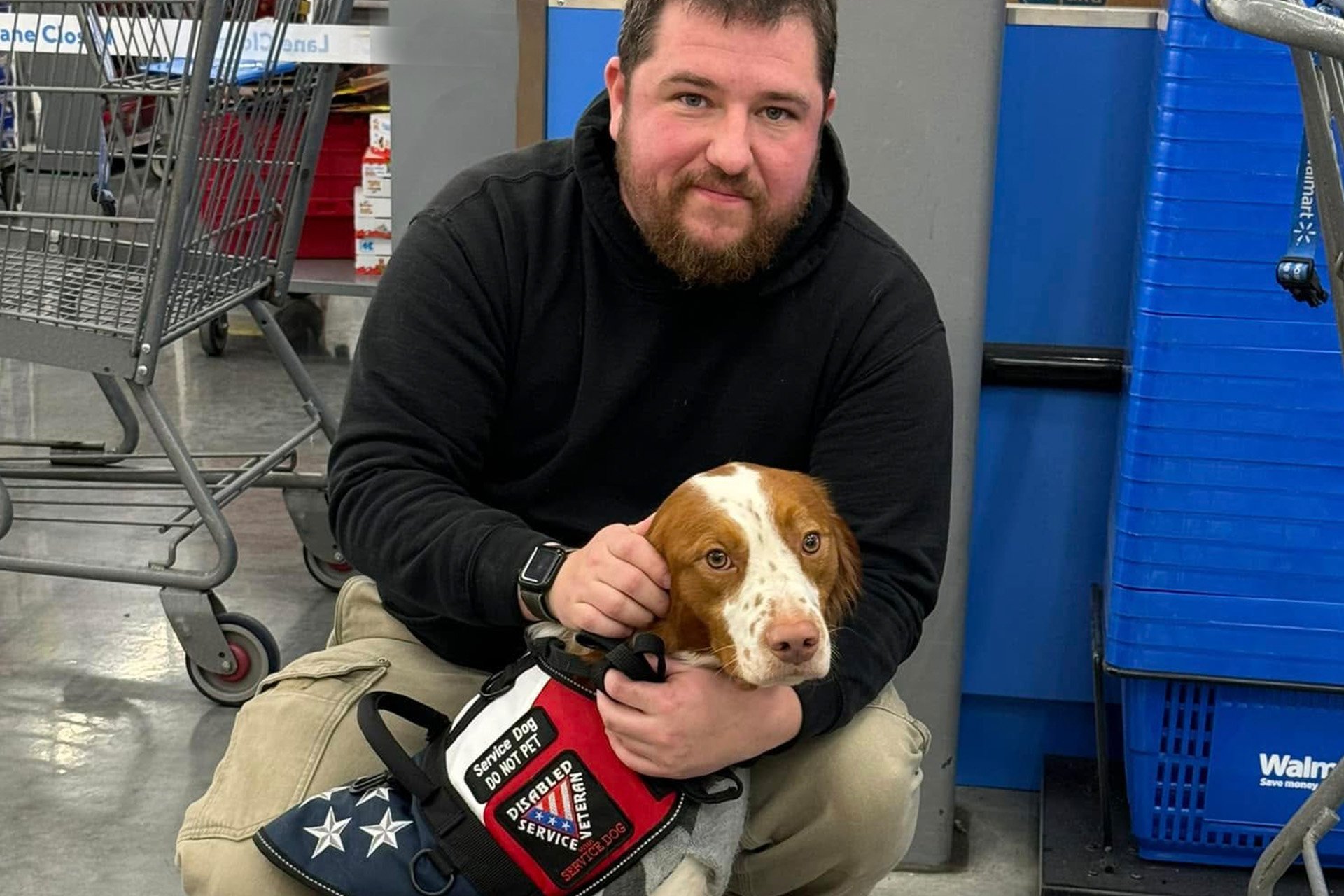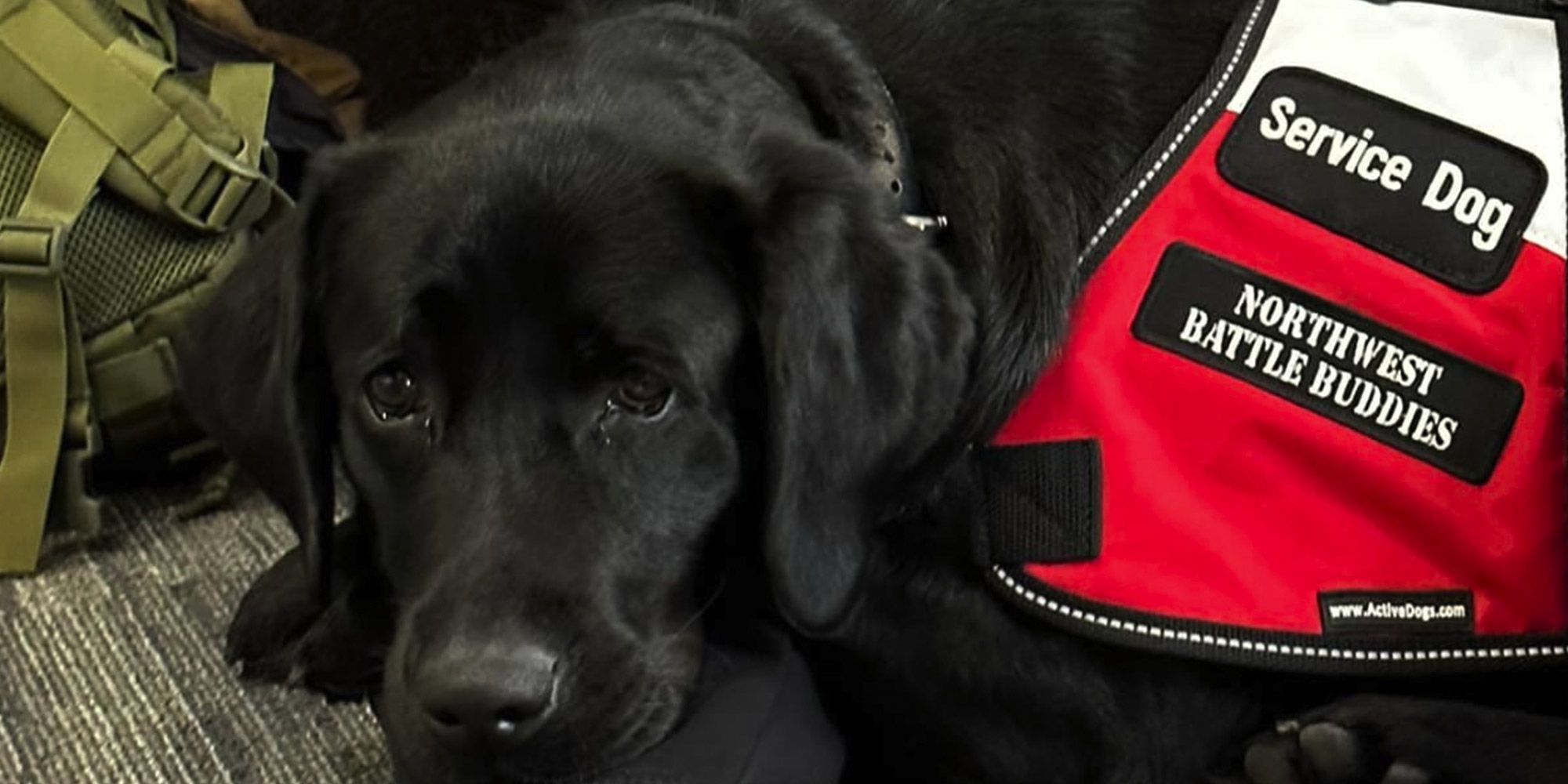5 Common Misconceptions About PTSD Service Dogs
Service dogs change lives, but myths about their work often stand in the way of full understanding and acceptance. Education is key to supporting our Veterans and their service dogs. When the community knows the truth, everyone benefits — especially the American Heroes these dogs serve.
|
Help us continue this life-changing work by joining Operation Never Quit, Northwest Battle Buddies’ monthly giving program. |
Misconception #1: Service Dogs Are Just Well-Trained Pets
Many people think that PTSD service dogs are simply well-behaved pets with a vest, but the truth is vastly different. These canines undergo hundreds of hours of specialized training to perform specific tasks that help mitigate PTSD symptoms, like recognizing anxiety attacks, providing pressure therapy during episodes, and waking Veterans from nightmares.
At NWBB, our training process is rigorous and purposeful. Each dog learns to respond to their Veteran's unique triggers and needs. This isn't just about teaching a dog to sit or stay (although there’s some of that too) — it's about creating a partnership in which the dog helps the handler navigate the world safely.

Misconception #2: PTSD Isn't a Disability That Requires Service Dog Support
Some people think that because PTSD doesn't involve visible physical limitations, it doesn't warrant a service dog. However, PTSD is recognized as a disability by the Americans with Disabilities Act (ADA). It affects the brain's ability to process stress and threats, changing how Veterans experience everyday situations. PTSD can prevent someone from working, maintaining relationships, or even leaving their home.
These limitations dramatically impact quality of life. PTSD service dogs perform tasks that directly address these symptoms, allowing Veterans to reclaim their independence.
Misconception #3: It's Okay to Pet or Distract a Working Service Dog
This misconception, while often coming from a place of love for animals, can have serious consequences. When a PTSD service dog is working, they are actively monitoring their handler for signs of distress. Any distraction — a pet from a stranger or someone calling to the dog, for example — can break the dog's concentration at a critical moment.
For Veterans relying on their service dogs to navigate crowded spaces or manage anxiety, interruptions can trigger the very symptoms the dog is trained to prevent. If you see a Veteran with a service dog, the most supportive action is to ignore the dog completely, allowing them to focus on their handler's needs. Following proper service dog etiquette isn't just polite — it's essential for the Veteran's wellbeing.

Misconception #4: Any Dog Can Become a Service Dog with Enough Training
While training is crucial, not every dog has the temperament to become a successful service dog. Service dogs should be carefully selected based on specific traits: calm demeanor, lack of reactivity, strong focus, and a natural desire to work closely with their handler. Many wonderful family pets simply don't possess the unique characteristics required for this demanding role.
After a year in foster care, our service dogs spend a minimum of 360 hours in training before they’re paired with their Veteran — and even then, not every candidate graduates. This selectivity ensures that Veterans receive dogs who will remain reliable partners in any situation, from busy airports to fireworks displays to unexpected confrontations.
Misconception #5: Service Dogs and Emotional Support Animals Are the Same Thing
People often think PTSD service dogs and emotional support animals (ESAs) are interchangeable. While both provide comfort, they are legally and functionally very different. Emotional support animals offer companionship through their presence alone and do not have public access rights.
As we’ve mentioned before, PTSD service dogs are highly trained to perform specific tasks that directly help with disability symptoms, while ESAs are not. Under the ADA, service dogs are legally permitted to accompany their handlers everywhere, which is not the case for ESAs.
Building a More Understanding Community
The more we learn about PTSD service dogs, the better we can support people who rely on them. At NWBB, we see firsthand how these partnerships change lives — they help American Heroes reconnect with their families and friends, return to work, and rediscover the freedom they fought to protect. Every time we educate someone about service dogs, we make it easier for Veterans to live full, meaningful lives.
Join Operation Never Quit today and become part of this mission. Your monthly donation to NWBB's giving program helps pair more American Heroes with the PTSD service dogs that will transform their lives.

